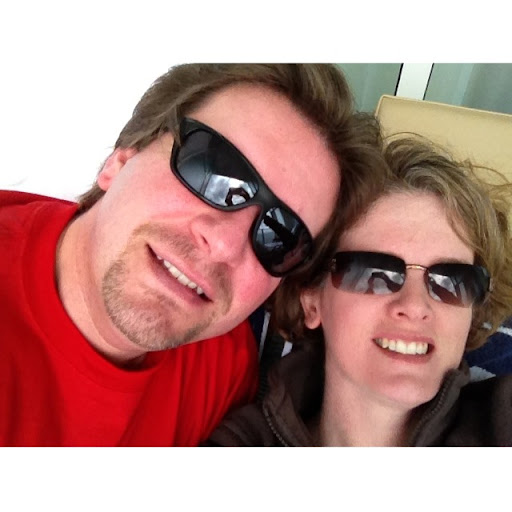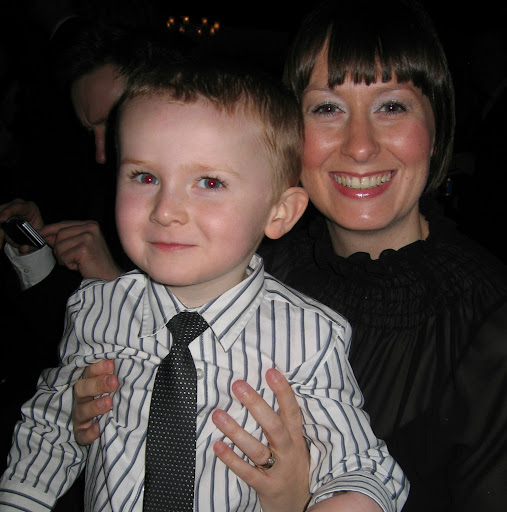Tracy Potter
age ~34
from Mount Holly, NJ
- Also known as:
-
- Trace Potter
- Falola Potter
Tracy Potter Phones & Addresses
- Mount Holly, NJ
- O Fallon, IL
- Snellville, GA
- Cincinnati, OH
- Houston, TX
- Mc Guire AFB, NJ
- Kenton, TN
Work
-
Company:Access servicesMay 2012
-
Position:Mobile therapist
Education
-
School / High School:Holy Family University- Newtown, PAMay 2012
-
Specialities:MS in Counseling Psychology
Us Patents
-
Cast Parts With Improved Surface Properties And Methods For Their Production
view source -
US Patent:7302993, Dec 4, 2007
-
Filed:Sep 28, 2006
-
Appl. No.:11/536149
-
Inventors:William A. Crawford - Cincinnati OH, US
Tracy J. Potter - Philipsburg PA, US
Donald F. Heaney - Philipsburg PA, US
Brain S. DeForce - Port Matilda PA, US
Samardh Onukuri - Cincinnati OH, US -
Assignee:Ethicon Endo-Surgery, Inc. - Cincinnati OH
-
International Classification:B22D 13/00
-
US Classification:164114, 164 34, 164516, 164488
-
Abstract:Techniques for forming cast parts for medical devices suitable for contact with internal regions of patients are described herein. Such parts can be small in scale (e. g. , having a major axis less than 0. 3 inches, and/or a minor axis less than about 0. 08 inches), and can be formed from metals that have a high melting point and high reactivity with environmental components or mold surfaces, such as stainless steel and titanium alloys. Such techniques can include injecting molten metal into the sprue of a mold tree such that the side runners are backfilled after the molten metal impacts a closed end of the sprue. Side runners can be oriented in particular directions and positions to promote backfilling. As well, flask temperatures and the use of surfactants can also promote cast part formation, hindering the formation of surface defects.
-
Cast Parts With Improved Surface Properties And Methods For Their Production
view source -
US Patent:7762308, Jul 27, 2010
-
Filed:Dec 3, 2007
-
Appl. No.:11/949262
-
Inventors:William A. Crawford - Cincinnati OH, US
Tracy J. Potter - Philipsburg PA, US
Donald F. Heaney - Philipsburg PA, US
Brain S. DeForce - Port Matilda PA, US
Samardh Onukuri - Cincinnati OH, US -
Assignee:Ethicon Endo-Surgery, Inc. - Cincinnati OH
-
International Classification:B22D 13/00
-
US Classification:164114, 164118, 164133
-
Abstract:Techniques for forming cast parts for medical devices suitable for contact with internal regions of patients are described herein. Such parts can be small in scale (e. g. , having a major axis less than 0. 3 inches, and/or a minor axis less than about 0. 08 inches), and can be formed from metals that have a high melting point and high reactivity with environmental components or mold surfaces, such as stainless steel and titanium alloys. Such techniques can include injecting molten metal into the sprue of a mold tree such that the side runners are backfilled after the molten metal impacts a closed end of the sprue. Side runners can be oriented in particular directions and positions to promote backfilling. As well, flask temperatures and the use of surfactants can also promote cast part formation, hindering the formation of surface defects.
-
Cast Parts With Improved Surface Properties And Methods For Their Production
view source -
US Patent:20080118771, May 22, 2008
-
Filed:Oct 30, 2007
-
Appl. No.:11/927933
-
Inventors:William A. Crawford - Cincinnati OH, US
Tracy J. Potter - Philipsburg PA, US
Donald F. Heaney - Philipsburg PA, US
Brian S. DeForce - Port Matilda PA, US
Samardh Onukuri - Cincinnati OH, US -
Assignee:ETHICON ENDO-SURGERY, INC. - Cincinnati OH
-
International Classification:B32B 15/01
-
US Classification:428687, 428544
-
Abstract:Techniques for forming cast parts for medical devices suitable for contact with internal regions of patients are described herein. Such parts can be small in scale (e.g., having a major axis less than 0.3 inches, and/or a minor axis less than about 0.08 inches), and can be formed from metals that have a high melting point and high reactivity with environmental components or mold surfaces, such as stainless steel and titanium alloys. Such techniques can include injecting molten metal into the sprue of a mold tree such that the side runners are backfilled after the molten metal impacts a closed end of the sprue. Side runners can be oriented in particular directions and positions to promote backfilling. As well, flask temperatures and the use of surfactants can also promote cast part formation, hindering the formation of surface defects.
Resumes

None At None
view sourcePosition:
none at None (Sole Proprietorship)
Location:
Greater Philadelphia Area
Industry:
Computer Software
Work:
None (Sole Proprietorship)
none
none

Tracy Potter
view source
Tracy Potter
view source
Office Manager
view sourceWork:
1To1 Kitchen&Bath
Office Manager
Office Manager

Tracy Potter
view source
Tracy Potter
view source
Tracy Potter
view source
Tracy Potter Hatboro, PA
view sourceWork:
Access Services
May 2012 to Present
Mobile Therapist Health AdvocatePlymouth Meeting, PA
Feb 2009 to Jul 2010 The Progressions Company
Trevose, PA
Sep 2007 to Jan 2009
Therapeutic Staff Support (TSS) worker
May 2012 to Present
Mobile Therapist Health AdvocatePlymouth Meeting, PA
Feb 2009 to Jul 2010 The Progressions Company
Trevose, PA
Sep 2007 to Jan 2009
Therapeutic Staff Support (TSS) worker
Education:
Holy Family University
Newtown, PA
May 2012
MS in Counseling Psychology Temple University
Philadelphia, PA
May 2007
BA in Psychology
Newtown, PA
May 2012
MS in Counseling Psychology Temple University
Philadelphia, PA
May 2007
BA in Psychology
Name / Title
Company / Classification
Phones & Addresses
TRP HOLDINGS, LLC
TRACY POTTER LLC
Myspace
Flickr

Tracy Andy Potter
view source
Tracy Gavin Potter
view source
Tracy Carlyon Potter
view source
Tracy Potter Adams
view source
Tracy Smart Potter
view source
Tracy Kiefer Potter
view source
Tracy Potter Perkins
view source
Tracy Potter
view sourcePlaxo

Tracy Potter
view sourceSigrist Cheek Potter PLLC
Classmates

Tracy Johnson (Potter)
view sourceSchools:
Dinwiddie County High School Dinwiddie VA 1980-1984
Community:
James Smith
Biography:
hi am doing just fine i have one son 23 years old two grandkids 3 and 11mths and i j...

Tracy Hundley (Potter)
view sourceSchools:
North Posey High School Poseyville IN 1980-1984
Community:
Bridgette Coon, Paula Stewart, Joe Spradlin, Shelia Bollinger

Tracy Potter
view sourceSchools:
Robert E. Lee High School Staunton VA 1985-1989

Tracy Potter
view sourceSchools:
Rutland High School Rutland VT 1979-1983
Community:
Heather Mosher, David Thomas

Tracy Potter (Kiefer)
view sourceSchools:
Wellsville High School Wellsville NY 1984-1988
Community:
Dave Dickerson, Michael Baldwin, Lynne Pollock

Tracy Potter
view sourceSchools:
Watertown High School Watertown NY 1975-1979
Community:
Fred Coritz, Patricia Curtis

Tracy Potter (Weber)
view sourceSchools:
Archbishop Ryan High School Philadelphia PA 1979-1983
Community:
Steven Daurizio, June Doll, Virginia Chaney, Kathy Politowski

Tracy Potter (Carlyon)
view sourceSchools:
Immaculate Heart of Mary School Chicago IL 1980-1985
Community:
Thomas Terlikowski, Marc Guerrero, Laura Quijano, Nancy Fugett, Terrie Therese
Googleplus

Tracy Potter
Work:
Inovalabs - Principal Research Technician (2012)
Education:
TSTI, Waco, TX - Electronics

Tracy Potter
Work:
Inovalabs - Principal Research Technician (2012)
Education:
TSTI, Waco, TX - Electronics

Tracy Potter
Work:
Laker High School
Education:
Central Michigan University - BA in Business Administration

Tracy Potter
Relationship:
Married
About:
I am happily married to the man of my dreams!!! We have 3 beautiful grown daughters and 2 handsome grandsons.
Tagline:
I'm not fat, I'm just more woman than some men can handle!!!!

Tracy Potter

Tracy Potter

Tracy Potter

Tracy Potter
Youtube
Get Report for Tracy Potter from Mount Holly, NJ, age ~34
















